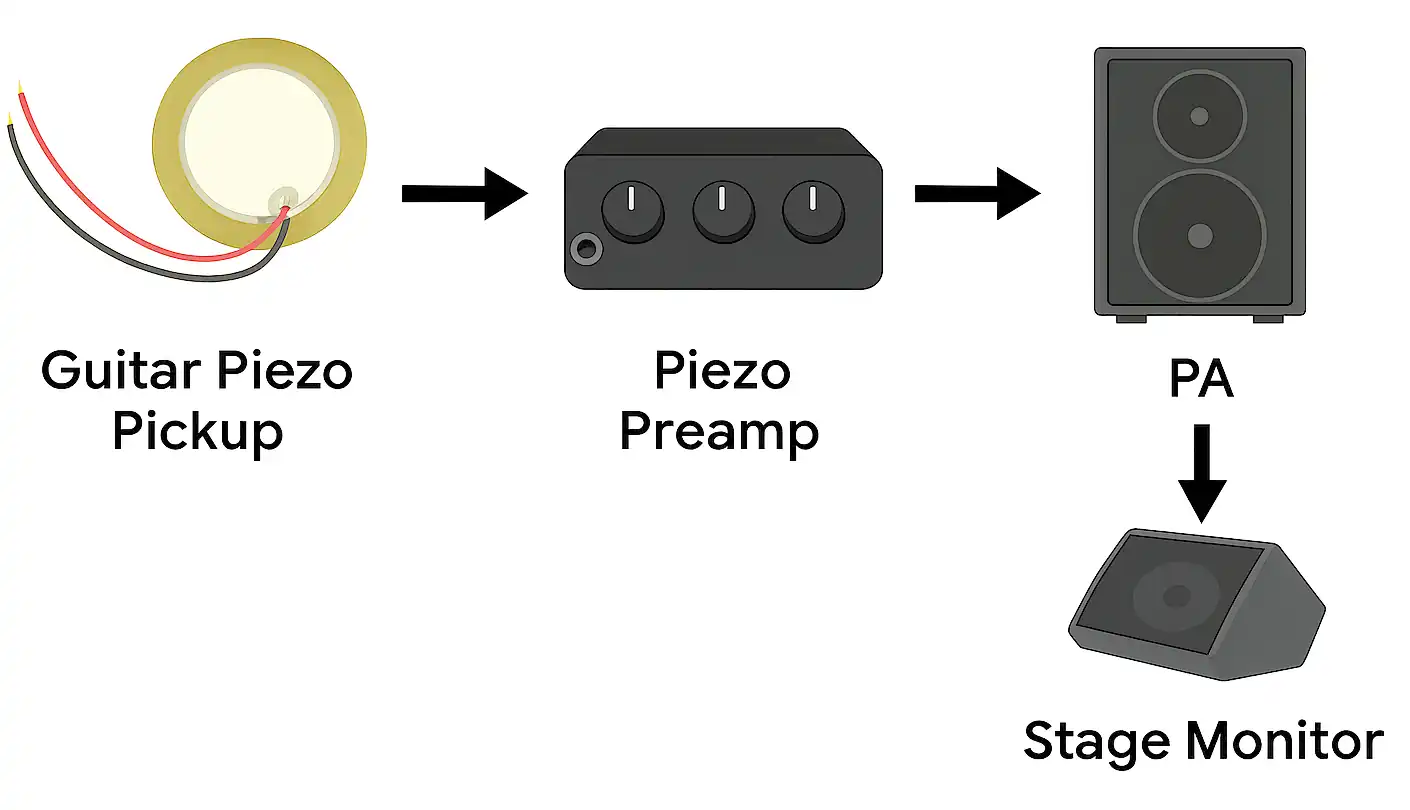High Impedance Matching (Piezos)

Why Your Piezo Pickup Might Sound Weird (And How to Fix It)
Ever plug in your guitar and wondered why it sounds thin, harsh, or just... off? If you’re using a piezo pickup, the problem might not be your playing or your gear, it could be impedance mismatch. Yeah, it sounds technical, but stick with me. This one tweak can seriously upgrade your tone.
What’s the Deal with Piezo Pickups?
Piezo pickups are a bit different from the magnetic ones you find in most electric guitars. They use crystals to pick up vibrations directly from the guitar’s body, which gives them a super detailed, percussive sound. Great for capturing the nuances of fingerpicking or strumming.
But here’s the catch: piezos have very high output impedance. Think of impedance like water pressure in a hose—if the pressure’s too high and the hose isn’t built to handle it, things get messy. Same idea with your signal chain.
Why Impedance Matching Matters
If your piezo pickup is sending a high-impedance signal into gear that’s not ready for it (like an amp or interface with low input impedance), you’re going to run into problems:
- Signal Loss: Part of your signal just vanishes. You’ll hear it as a weak, lifeless tone.
- Weird Frequency Response: Some frequencies get boosted, others disappear. Your guitar starts sounding like it’s underwater.
- Noise and Distortion: You might get buzz, hum, or even unwanted distortion. Not the good kind.
The fix? Use a high-impedance input.
Often called “high-Z", these are designed to handle piezo pickups properly, usually rated in the megaohm range meaning that your signal gets through cleanly, with all the sparkle and detail intact.
Enter the Buffer: Your Tone’s Secret Weapon
Even if you’ve got the right input, long cables and pedalboards can still mess with your sound and that’s where buffering comes in.
A a piezo buffer or preamp is a tiny high-impedance circuit that sits between your pickup and the rest of your gear. It fixes the impedance and boosts your signal just enough to keep it strong and clean as it travels through cables, pedals, and whatever else you’ve got in your rig.
Here’s what piezo preamp does for you:
- Keeps Your Highs Crisp: Without a buffer, high frequencies can get lost. Your tone turns muddy. A buffer keeps the sparkle.
- Gives the bass end rich deep tones.
- Fights Cable Drag: Long cables = signal loss. Buffer = signal stays strong.
- Reduces Noise: Buffers help isolate your pickup from noisy electronics, cutting down on hum and buzz.
Final Thoughts
If you’re serious about your tone, especially from piezo pickup, don’t ignore impedance matching and buffering. It’s not just for gear nerds. It’s for anyone who wants their guitar to sound the way it’s supposed to: rich, clear, and full of life.
So next time your acoustic-electric sounds like it’s been run through a blender, check your input impedance. Add a buffer if needed and your ears will thank you.
